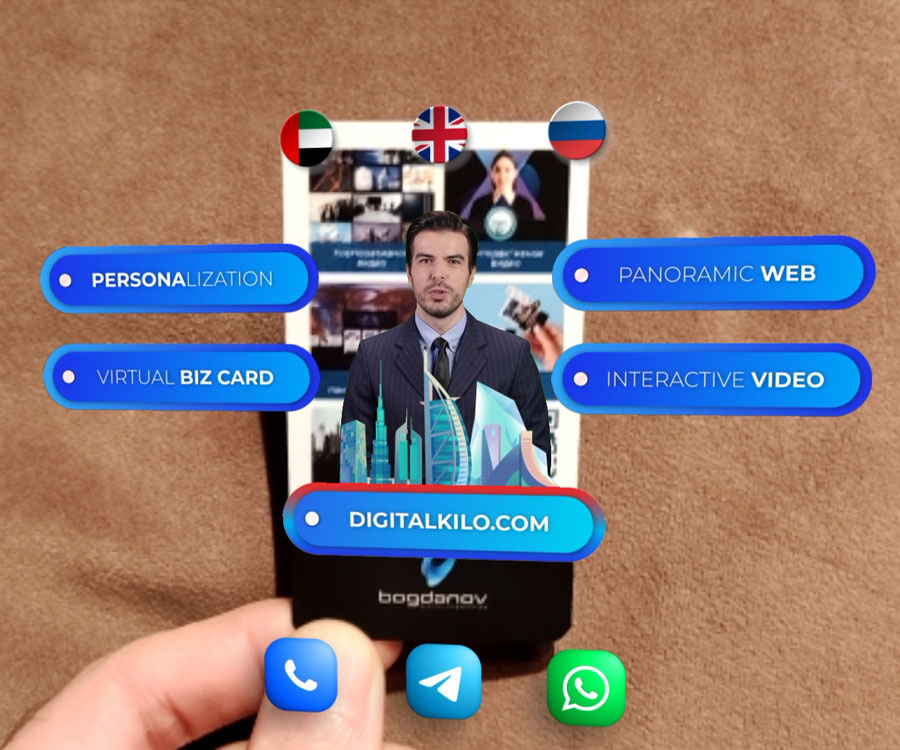How AR Is Changing the Way We Interact with Digital Content
Augmented Reality (AR) is no longer a futuristic concept confined to sci-fi movies or tech conferences. It is a transformative tool changing how we engage with digital content, merging the physical and virtual worlds in ways previously unimaginable. From immersive shopping experiences to interactive learning tools, AR is redefining how businesses and consumers interact with content. Here's how this groundbreaking technology is making waves across industries.

Immersive Encounters Go Beyond Engagement
In the world of content as we know it, traditionally seen on screens, two unchanging principles exist. AR revolutionizes this landscape by offering engaging and interactive experiences that deeply connect with users.
In the world of retail and online shopping, augmented reality (AR) enables customers to test products before making a purchase. For example, applications such as IKEA Place enable individuals to see how furniture looks in their living spaces, while beauty companies provide try-ons for makeup products.
Playing games that incorporate augmented reality (AR), such as Pokémon GO, revolutionizes the entertainment experience by merging it with the world's surroundings. Marketing strategies incorporating augmented reality (AR) initiatives captivate viewers through 3-dimensional graphics and customized encounters, rendering conventional advertisements obsolete. An interactive billboard with AR features could allow people to use their phones to scan it and reveal animations or virtual rewards.
Transforming the Landscape of Education and Training
Augmented reality (AR) is changing the way we learn and develop skills by integrating guidance or simulations with our physical surroundings to enhance the learning process and make it more interactive and impactful.
- Students in education have the opportunity to engage with 3D representations of systems and virtual dissections of frogs using augmented reality applications. They can also take virtual tours of historical sites through these AR apps.
- In training settings across industries such as healthcare and manufacturing, augmented reality (AR) is commonly utilized for practical, hands-on learning experiences. A good instance of this is surgeons getting the opportunity to rehearse surgeries in a controlled setting, while technicians benefit from guidance on intricate machinery tasks.
Improving the Art of Storytelling and Media Narratives
Writers are increasingly utilizing augmented reality to expand the possibilities of storytelling by creating interactive narratives.
- Movies and television have embraced AR apps to allow fans to immerse themselves in the worlds of their shows by delving into characters and settings beyond the confines of the screen.
- Publishers utilize augmented reality (AR) to enhance the content of books and magazines, transforming pages into interactive experiences for readers. A classic example is a printed recipe that comes alive through animation when accessed using an AR application, guiding users through step-by-step instructions dynamically.
- AR-enhanced filters on social media platforms such as Instagram and Snapchat have elevated the realm of storytelling, injecting a new level of creativity and interactivity that captivates audiences like never before.
Changing the Way People Shop and Make Purchasing Decisions
AR technology effectively blends in-person shopping experiences with the convenience of online tools, providing consumers with both accessibility and personal touch.
- Fashion companies now offer virtual fitting rooms to help customers try clothes on digitally before making a purchase decision. This technology aims to minimize uncertainty and boost shoppers' confidence in their selections.
- Visualizing products using augmented reality (AR) enables customers to see how items integrate into their routines, whether it's exploring home improvements or virtually test-driving vehicles from the comfort of their homes.
- Interactive augmented reality (AR) advertisements promote user engagement and create a memorable impact compared to traditional static banners.
Bridging the Divide Between the Physical and Digital Realms
Augmented reality goes beyond enhancing content; it integrates it into the real world.
- Apps such as Google Maps have integrated augmented reality (AR) navigation features that display arrows and landmarks directly onto your smartphone's real-world view for easier navigation.
- Museums and galleries leverage augmented reality (AR) to enrich their exhibits by incorporating layers of information, such as animations and historical reconstructions.
- Potential homebuyers can explore properties by taking virtual tours, navigating through different rooms, and seeing real-time visualizations of potential modifications.
Exploring the Impact of Augmented Reality on Business Advancement
Businesses are now using AR technology to develop ideas that were once considered impossible.
- Technicians can use augmented reality (AR) for guidance in resolving issues with machinery, minimizing both downtime and mistakes.
- Collaboration is enhanced by augmented reality (AR), allowing teams to view and interact with 3D models throughout the design and development process, ultimately improving teamwork efficiency.
- Using augmented reality sets companies apart as pioneers in their field, attracting tech-savvy audiences and securing a competitive advantage in the market.
The Upcoming Developments in Augmented Reality
Though augmented reality (AR) is making strides in its development and application across various fields, challenges remain:
- Creating high-quality AR experiences often requires specialized devices or high-speed internet connections.
- Developing AR content demands expertise and advanced tools.
- Not every sector is eager to incorporate augmented reality technology into their operations.
Despite these challenges, the outlook for augmented reality appears bright. With advancements in technologies such as AR glasses and software, augmented reality is poised to seamlessly integrate into our daily routines.
In Summary
The use of augmented reality is changing how we engage with content by enhancing its interactivity and personalization. Businesses view AR not as a passing fad but as a chance to innovate and engage with their audience in meaningful ways. Experts predict that as AR advances further, the line separating the physical and digital realms will become increasingly blurred, presenting opportunities for experiences beyond our current imagination.
Are you interested in delving into the world of augmented reality to enhance your brand's image and effectively reach your audience? Get in touch with Digitalkilo today. Let us show you how we can turn AR concepts into reality!
What's Your Reaction?





















